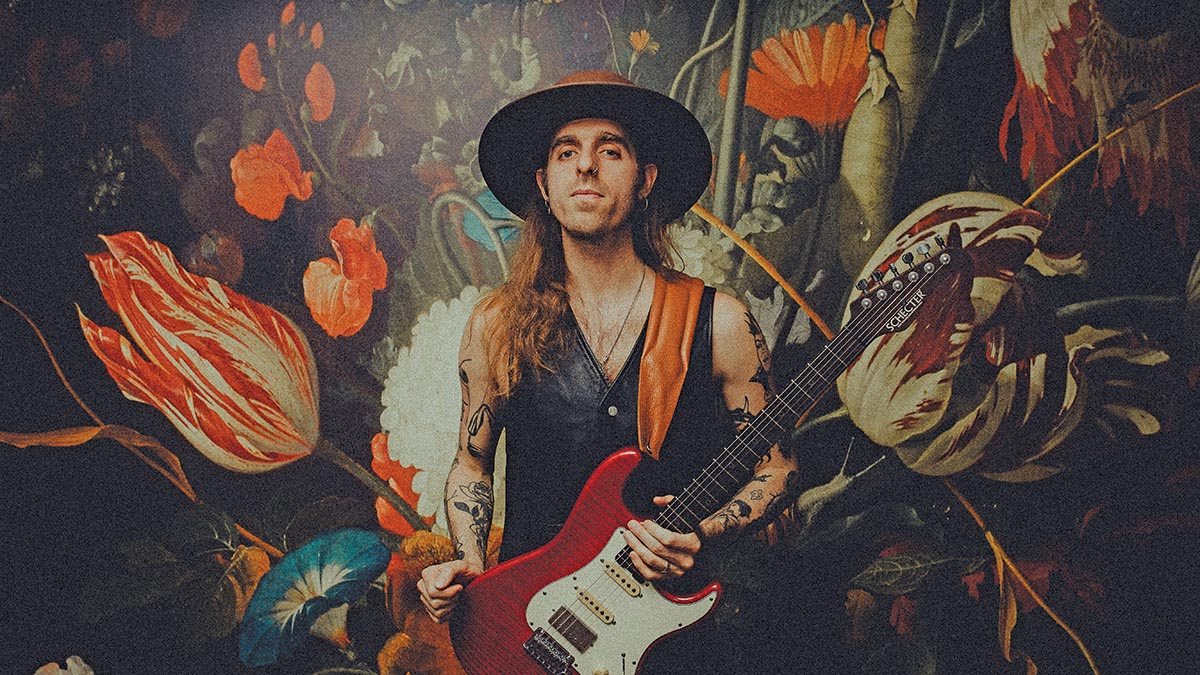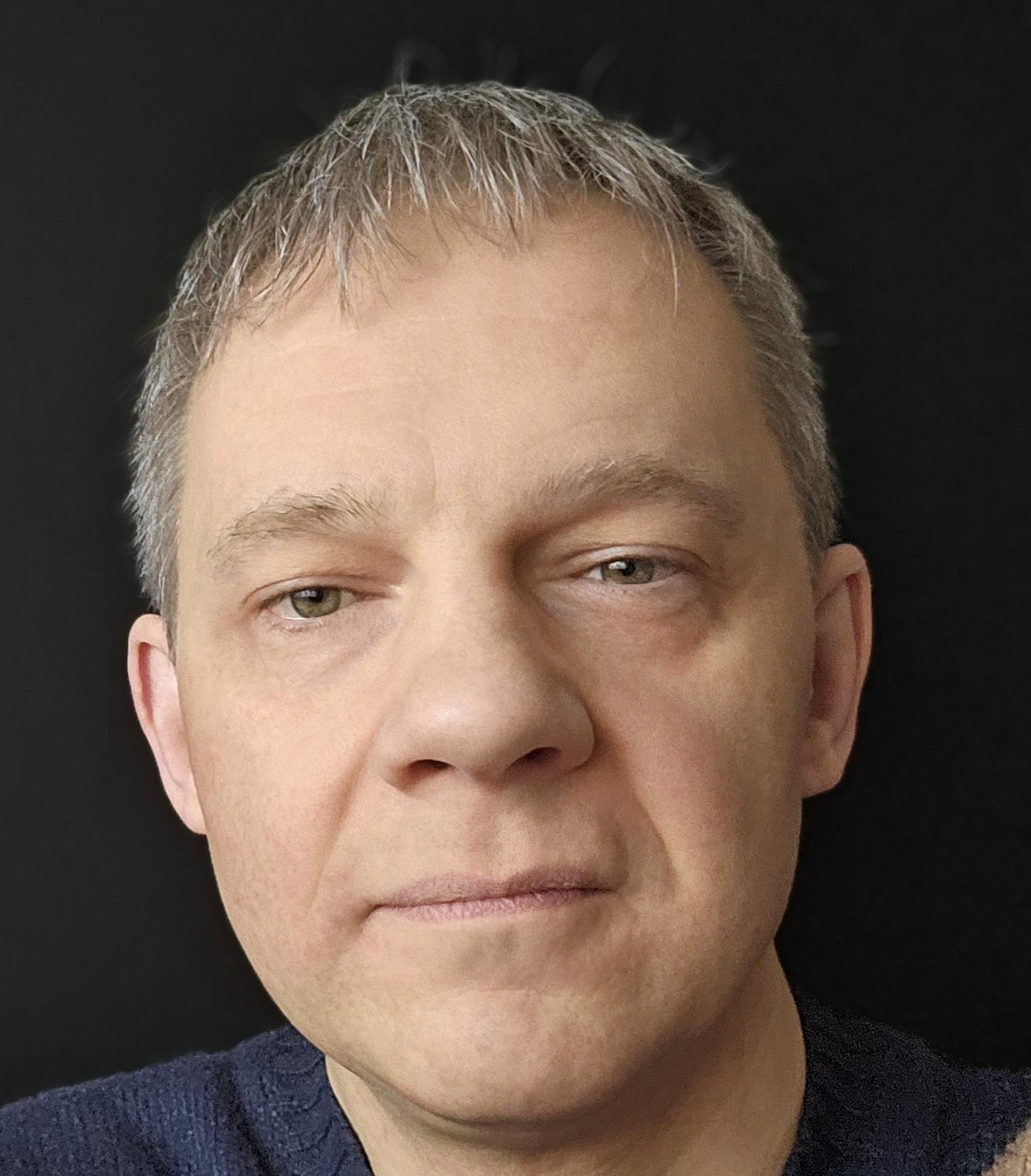Nick Johnston: “The first few Yngwie Malmsteen albums still make me smile. The ferociousness of that playing is still unequaled”
The Schecter-toting virtuoso details his musical approaches, influences and how his style came together

Canadian virtuoso Nick Johnston makes a fascinating case study for any player looking to take their style and sound off road. Here is a player with the chops and influences that could have seen him ensconced in shred, but then there’s a push/pull with him, a musical curiosity that steers his playing towards broader horizons.
As reveals, the writing does not begin with his Schecter signature guitar, but rather the piano – an approach that helps inform his phrasing, that helps keep it fresh. Young Language brings the piano to the fore, and also his vocals.
This asks questions of Nick Johnston the guitar player, and where best to put his strings. Guitar might be the first reason why we are speaking to him today but, as it turns out, they are last to go on the record. Here, he explains why.
What areas of progress and development do you feel is evident on Young Language?
“Every time I release an album, I aim to do something a little different. On this record, it was the addition of the live grand and felt pianos. I also started performing the keyboard parts and the other addition was my singing. I think the record also features some of my best playing.”
How long did it take to write and record?
“Strange Silent Places was written first and Bleeding Through was the last. I had enough music to do a fully instrumental release, but I really wanted to add vocals, so after I finished Bleeding Through, it felt like a complete record. The recording was pretty comfortable. I was in the studio for a week recording guitars and singing.”
Get The Pick Newsletter
All the latest guitar news, interviews, lessons, reviews, deals and more, direct to your inbox!
There is a strong sense of sophistication and maturity as regards space in the arrangements and harmonic scenarios. Can you elaborate?
“I’ve always been interested in writing very simple melodies but supporting them with interesting chords and harmonies. I developed a taste for that back when I was a teenager. I remember listening to movie scores, classical music, videogame sound tracks and finding all of that music was much different than what rock, metal and blues players were writing. I wanted to be able to do what those composers were doing.
“I’m still in my infancy, but I’m developing my sound and my approach to writing like this. Pieces like Silver Moon Rising and Lockbox showcase that slow build of dynamics. Finding a new way to get into a chorus or a verse, or a new arrangement that will end up having the guitar solo in a weird spot.”
Have you studied classical music?
“One of my all time favourite melodies is from Beethoven’s Sonata ‘Pathetique 2’. The way that melody moves and is supported by the chords is devastating. It also makes me realise I have so much further to go with my ears and my heart. And that excites me. My favourite film composer of all time is Bernard Herrmann.
“He was a film composer, classical musician, progressive rock, jazz fusion and overall mad scientist with music. Anyone who’s interested in harmony should listen to his work in films like Vertigo and Psycho.
“I also really loved what Rich Vreeland did with It Follows. A movie with no exact time period, he uses synthy warbling strings, big bass and tons of unique percussion to show the unsettling nature of what’s happening on screen.”
The bridge is my favourite part of Young Language. It’s just one Minor chord with this bluesy chromatic line on top, doubled by a horn to create this big uneasy sounding melody
And what of ’60s/’70s US music – are you a fan of Joni Mitchell, Crosby Stills Nash, Seals and Crofts or Mamas and the Papas?
“I do enjoy that music, yes! The production and the lyrical content are wonderful. I’m always trying to develop that side of my music mind as I have another band called Archival where we sometimes try to do something similar.
“In terms of ’70s music, I was always more of a Steely Dan fan. There’s a Canadian musician that I absolutely adore and admire named John Southworth. He released a record in 2014 called Niagara and it captures some of that singer songwriter magic. That record is in my top five.”
The title track Young Language is exquisite.
“I wrote that song with the piano as the driving force. The melody in the verse and the chorus came together quite quickly as I had been experimenting with those chord progressions for a few years. The bridge is my favourite part of that track. It’s just one minor chord with this bluesy chromatic line on top, doubled by a horn to create this big uneasy sounding melody.
“I also like how it’s bookended by the same figure. The Lydian augmented sound is just so pleasing when it’s in this context. Mixing that awkward, sometimes evil sound with blues is such a cool sound.”
My biggest four guitar influences growing up were SRV, Yngwie, EVH and Jeff Beck; distinct players all playing from the heart in their unique styles
You like semitone chordal shifts where a note is shared between the chords.
“It’s the emotion behind that change. No matter how many times I use it, it still feels relevant and powerful. It’s all about where and how you use it. I also love using a major chord a semitone above a minor chord such as Am-Bb.
“Lately I’ve been using the same major chord to create movement by implying a different mode with it. For example, I have a new song where I’m coming out of a solo on a C chord using C Mixolydian, and then it moves to the chorus on the same C chord, but I treat it as Lydian. To make it musical and concise is tricky.”
Sometimes your playing with a single-coil tone evokes a blend of SRV and Malmsteen.
“Absolutely! I’d say my biggest four guitar influences growing up were SRV, Yngwie, EVH and Jeff Beck: distinct players all playing from the heart in their unique styles. The first few Yngwie albums still make me smile. The ferociousness of that playing is still unequaled. I was always terrible at picking out what my favourite players were doing, so I’m kind of a weird stew of what I thought all of these guys were doing.”
Part of your style is your laid-back phrasing; the sense of dragging adds weight to notes...
“I like when the band is tight and ‘on the grid’, but I always find it restrictive when I have to be locked in. It creates a very interesting energy when your melody is floating around everything. I think it comes from listening to gypsy jazz players and horn players.
“There’s always something dragging a bit to create space and drama. I think I really started noticing it when I was recording Remarkably Human. There’s so much space on that album and if I’d just played tight and on the grid, it wouldn’t have worked.”
How have you honed your technique?
“A big part of it was just simple time spent with the instrument. I was very hard on myself and was very awkward with who I was so the guitar was there to help me through it. At 35 years old I’m still working on music every day. It saved me in a lot of ways. I would try to learn parts from my favourite players, but I was never able to do it.
“Perhaps that was due to the lack of resources available, or the fact that I’m left-handed and my right hand was always so stubborn. I attribute all of my playing ability and my understanding of music to simply playing a lot, and listening to a lot. I find myself going back to those older records with different ears and a fresh perspective.

“I’ve learned that my true love for music lies in creating it, rather than sometimes actually playing it. I’ve never really had a practice routine. It was all about trying to play. Just pick the instrument up and aim to play something natural. The idea of letting it flow out of you, being in the moment and using the tools you’ve developed. That was always the goal for me.
“I was obsessed with the idea of 'how long can I play something spontaneous before I make a mistake?' The technical stuff came relatively easy as I was playing up to 10 hours some days. I remember listening to Yngwie play really fast and couldn’t decipher how he was doing it. I figured out how to sweep pick after listening long enough. The legato and smoother lines came from being left-handed and having a sloppy right-handed technique.”
- Young Language is out now via Remarkably Human.

Jason Sidwell (BA Hons, MA, ALCM) was editor of Guitar Techniques, is senior tuition editor for Guitarist and has written/edited over 25,000 printed articles since 1998. He is an advisor/guest tutor for UK music academies, a director/tutor for the International Guitar Foundation (IGF) plus author of How to Play Guitar Step by Step (Dorling Kindersley) and tutorials for The Guardian and Observer. His unique Guitar Day teaching events have been running for over a decade. He is also a busy classical guitarist and theatre musician, has recorded with musicians such as Steve Morse, Paul Gilbert, Andy Timmons and Marty Friedman and has a broad cliental for studio guitar work.









